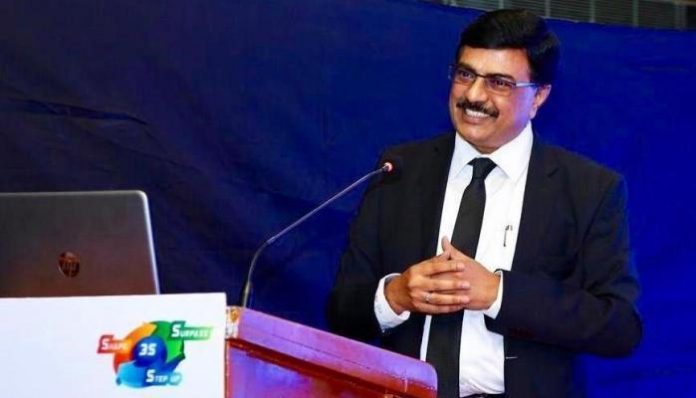
Indian corporates have witnessed more than adequate curtain raisers from mere advices to stern warnings in the last few years than more than ever before on the need to embrace change faster. The unstoppable trends such as Industry 4.O, AI, Machine Learning and more importantly the New Age Workforce that is entering the corporates and consequently compelling the HR teams to re-define their role.
Employees across industries have now started realising the fact that “What brought us here, Will not take us there”, some witnessing changes happening around, some being part of it and most wondering what has happened.
Opportunities Ahead: A decade after the global financial crisis of 2008, emerging market economies in 2018 now account for 60% of global GDP, on purchasing-power-parity terms compared with 44% in the decade before the crisis. This is a wakeup call for all countries to grasp the opportunity. While 2018 saw the rising oil prices – rising up to a 4 year high ever over $86 per barrel before falling sharply in December – sharp rupee depreciation – up over 17% YTD to $74.3, before some correction later.
While the above combined with other macro indicators raised concerns and the current account deficit more than doubled, compared to the countries that matter, Indian economy is still on a stronger footing and continues to lead global growth bt expanding at 7.3%. India now contributes on purchasing power parity basis, 15 % of the growth of global economy.
India has also climbed 65 places in World Bank’s latest Ease of Doing Business survey. It has now ranked 77th against 142nd in 2014. In addition, there is silver lining to all the upheavels. GDP growth in India, will continue at rate exceeding 7% for the next three years, according to the World Bank. It will be a few notches better than China. As per IMF’s World Economic Outlook, India will be a source of growth for the global economy for the next few decades. According to Morgan Stanley, India is expected to become $6 trillion economy by 2030.
3 Ps: To ride the growth wave for the next decade, in the light of opportunities that are unfolding before us, embracing the philosophy of Country First, Company Next, Indian companies need to be geared up for having uncompromising focus on People, Profits and Planet to emerge as a globally competitive workplace. Profit is no longer an ugly word and the word greed can replace aspiration for achieving exponential growth and not merely satisfied with incremental growth as long as the interests of other 2 Ps (People and Planet) are ring fensed and duly protected.
Grow or Perish: In the context of the above and Indian companies moved far away from the license raj to emeging global competition, there will be only two options for the companies either to grow or perish. Hence only the companies which become “Innovative and Agile” faster can survive and stay ahead of the curve. A fundamental shift in the Mind Set is therefore required, namely the Growth Mind Set (Ref.1) which leads to a desire to learn and therefore embrace challenges, persists in the face of setbacks, see effort as the path to mastery, learn from criticism and find lessions and inspiration in the success of others and as a result they reach ever-higher levels of achievement while others plateau early and achieve less than their full potential.
Up-skilling the Organisation: The one thing that’s made all the difference in highly successful organisations is their investment in people and making them as Future Ready and thus emeging as a Learning Organisation. It is anticipated that up-skilling the organisation will eventually become a life-long theme and a strategic business agenda over the next decade instead of being merely part of KRAs of a few HR folks.
Top 5 Priorities for HR:
A recent study (Ref.2) clearly articulates the top 5 priorities across all HR leadership role as below :
- Building Critical Skills and Competencies,
- Current and Future Leadership Bench,
- Employee Experience,
- Organisational Design and Change Management and above all
- Driving Digital Transformation.
The acid test for HR Professionals therefore is not how well they will be performing their role to achieve the desired results in the above mentioned areas, but how differently will they play the role to Make A Difference.
Top 5 Levers to Pull:
The following insights probably can facilitate HR leaders to make the necessary impact in alignment with the larger purpose of their organisations :
- Customer Obsessions : Start every HR process with the customer in mind and work backwards.Re-visit the existing processes with customer centricity.
- Creative Problem Finding : Focus more on creative problem finding for transformational innovations rather than creative problem solving which can lead only to incremental innovations.
- Awaken the Genius Within : Encourage employees, espeacilly HiPos to hit the targets which no one else can see rather than rewarding them just for hitting the targets that others do not hit. Thus one can enable the talents to awaken the genius within.
- Abundance Mentality : Shape the culture of the organisation to foster abundance mentality, which is nothing but unlearning faster, challenging the previously held beliefs and more importantly finding a new way of seeing the world. Invariably people are quite comfortable in seeing “ The New “ through the lens of the old instaed of changing the lens periodically. This will help the organisation to come out of its confirmation bias.
- Be Willing to Fail : If you want to be inventive, you have to be willing to fail. As the popular quote says,” A dream doen’t become reality by magic : It takes sweat, determination,hard work and failure.” Encouage experimentation culture and allow employees to fail, faster and share learnings from mistakes with pride.
- Be Willing to be Misunderstood : Progressive organisations by design encourage their employees to be willing to be misunderstood. This is how they encourage innovation, agility and diversity in the though process for bringing in rarest of rare products /services.
Top 3 Skills of the Next Collar Workmen:
Blue Collar workmen are going to be the real competitive advantage and therefore a renewed thrust is envisaged in Employee Relations arena, moving away from Entitlement to Engagement and now to inspiration and mutual admiration. The blue collar workforce will emerge as The Next Collar and is likely to play a significant role in the growth agenda. The 3 key skill sets for the workers of 2030 ( Ref.3 ) are Higher Cognitive skills, Social and Emotional skills, Technological skills and therefore role of HR becomes all the more critical in ensuring the above while Automation and AI will continue to accelerate the shift in skills that the workforce needs.
Top 3 Pre-requisites for the New Age HR :
The role expected out of HR leaders is already undergoing a sea change and unless they become as a Co-pilot to the CEO and ensure exemplary standards in-
- Diversity,
- Sustainability and
- Inclusive Growth
and protect the interest of not just internal and external customers but all the external stakeholders, the role will fade away.
Credible Leadership:
The crux therefore for the HR leaders is to grow out of their traditional role (3 Rs : Recruit, Retain, Retire) by developing new Metal Maps and Metrics (3 Ms) for the HR function and leading transformational changes by embracing 3 S (Step up, Shape, Surpass) framework as a way of life (Stepping Up the function to the next level, Shaping the organizational culture and Surpassing the competition) besides exhibiting 2 Cs (Courage and Conviction) whenever required for ensuring transparency and governance.
Views expressed by the author are personal. Bibliography : Ref.1. Mindset by Dr Carol S Dweck, Ref.2.Gartener : 2019 HR Trends, Ref.3.McKinsey Global Institute Workforce Skills Model, Ref.4. Myth, Magic, Mindset by John O Burdett.
————————————————————————————————————————–
Agility @ JKO
J.K. Organisation is an Indian conglomerate head-quartered in India with a heritage of more than 125 years. The Group has multi-business, multi-product and multi-location operations with a turnover of $5 billion with its foot prints in various countries across the globe. The strong brand equity of the Group has been built through use of latest technologies, continuous research & development and innovation. The Organisation has set up highly reputed Research and Development Institutes in various fields. In response to rapid changes in global business environment , JKO’s Corporate HR Council (CHRC) decided to bring Organisational Agility & Innovation into focus. Therefore, the organisation wide initiative, UDAAN was aptly leveraged by selecting the theme for the year as “Building competitive edge through Innovation and Agility” and more than 80 Cross Functional Teams across businesses / locations were formed to work on the above theme.
In addition, a base line survey was carried out across 19 locations of the group by administering a questionnaire (Ref.4) on Agility. The results of the survey was compiled location wise and mapped against four Agility quadrants namely Cultural drift ( contingencies of the day overwhelm the means/ short term oriented ) Myopic ( Strong culture but lacks agility, inward looking and wedded to past experience ) Chaotic ( challenge, candour and flexibility are high, however agility on its own breeds confusion ) and Stragility ( strong agile culture having profound influence on its members, creates the freedom for new thinking, new ways of doing things and new behaviours ) and shared with the businesses to sharpen their saw further. In addition the detailed report covering scores and its imperatives on sub-themes such as Leadership, Communication, Teamwork, The Customer’s voice, Talent Management and Challenging the status quo quadrant were also shared with respective businesses to understand various factors impacting their agility.
Out of the total 84 CFTs who worked on the above theme, 15 teams with best ideas were chosen through intra unit and intra business competitions. An external panel of judges evaluated suggestions of the top 15 CFTs and 3 best teams were selected. These 3 teams were invited to share their recommendations in front of entire JKO top Management and were awarded by JKO Chairman Shri. B H Singhania. Action plans recommended by the CFTs were compiled and shared with all business and plant teams and suitable action plans were then implemented. It is heartening to note that 17 out of 19 locations figured in the Stragility quadrant representing the presence of a Strong Agile Culture, a re-affirmation of JK Organisation’s continued commitment on investing in people.








